Weapons of Math Destruction: How Big Data Increases Inequality and Threatens Democracy
Original price was: $41,99.$16,99Current price is: $16,99.
- 100% Satisfaction Guaranteed!
- Immediate Digital Delivery
- Download Risk-Free
✔ Digital file type(s): 1𝐏𝐃𝐅
NEW YORK TIMES BESTSELLER • A former Wall Street quant sounds the alarm on Big Data and the mathematical models that threaten to rip apart our social fabric—with a new afterword
“A manual for the twenty-first-century citizen . . . relevant and urgent.”—Financial Times
NATIONAL BOOK AWARD LONGLIST • NAMED ONE OF THE BEST BOOKS OF THE YEAR BY The New York Times Book Review • The Boston Globe • Wired • Fortune • Kirkus Reviews • The Guardian • Nature • On Point
We live in the age of the algorithm. Increasingly, the decisions that affect our lives—where we go to school, whether we can get a job or a loan, how much we pay for health insurance—are being made not by humans, but by machines. In theory, this should lead to greater fairness: Everyone is judged according to the same rules.
But as mathematician and data scientist Cathy O’Neil reveals, the mathematical models being used today are unregulated and uncontestable, even when they’re wrong. Most troubling, they reinforce discrimination—propping up the lucky, punishing the downtrodden, and undermining our democracy in the process. Welcome to the dark side of Big Data.
35 reviews for Weapons of Math Destruction: How Big Data Increases Inequality and Threatens Democracy
You must be logged in to post a review.


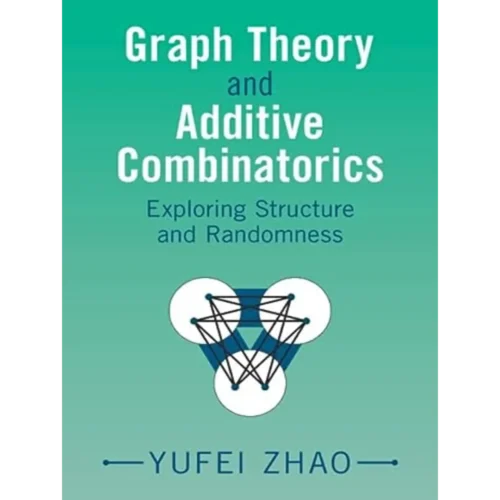



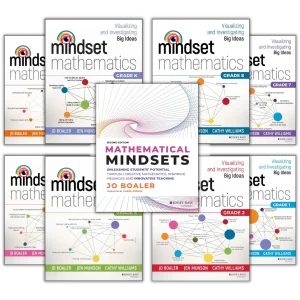
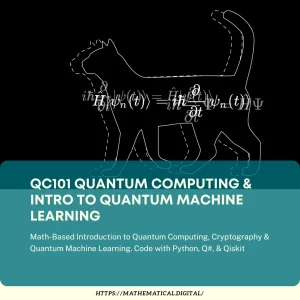
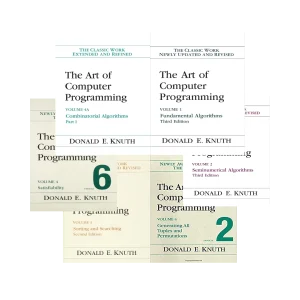
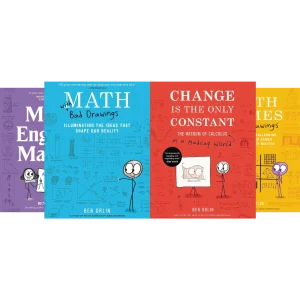
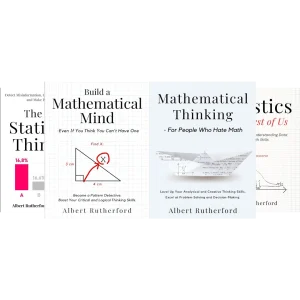



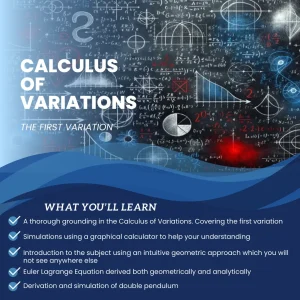








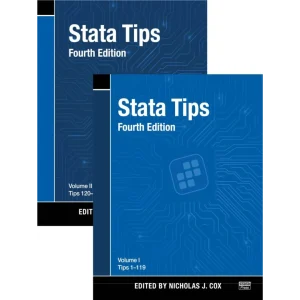
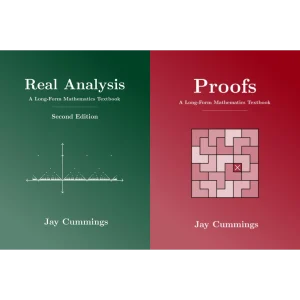
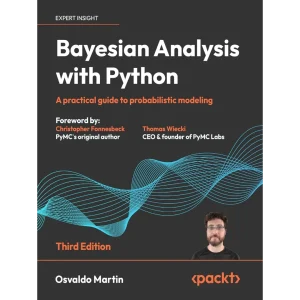
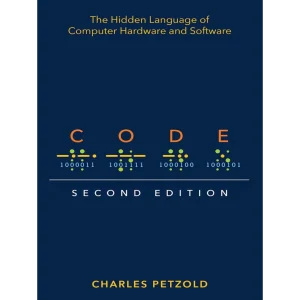
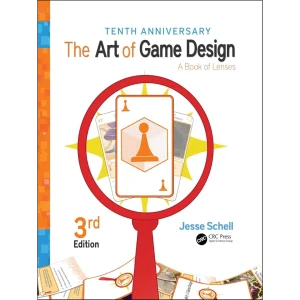

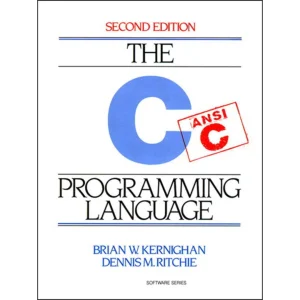

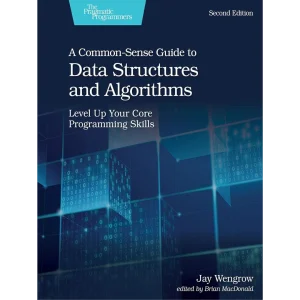




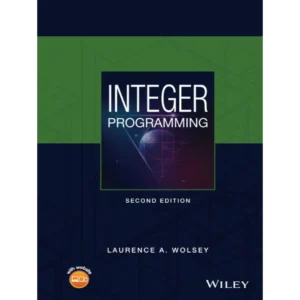



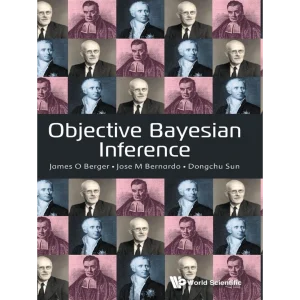
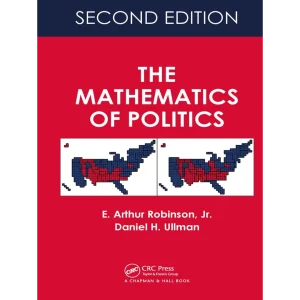
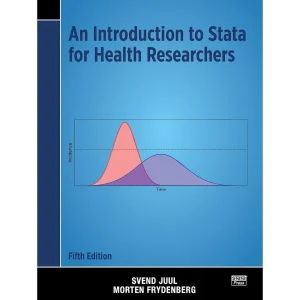

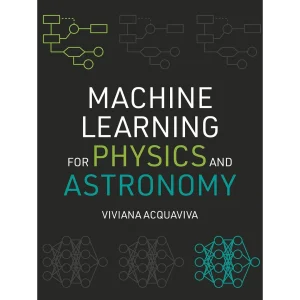

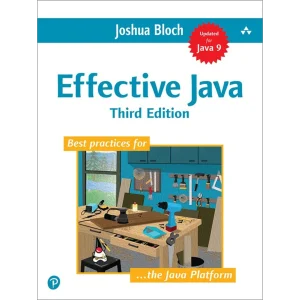


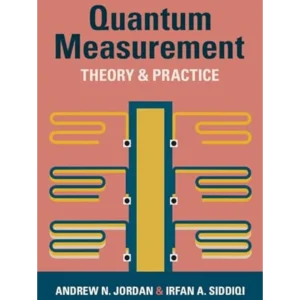

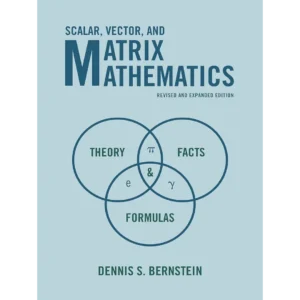


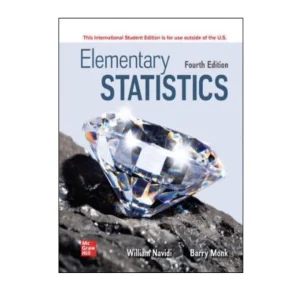
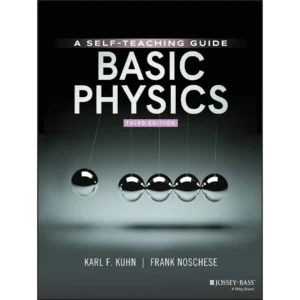
Graham Webster –
This is a well written book about the data science algorithms that can influence our lives. If all they were responsible for was recommending other books we might be interested in reading, then the topic wouldn’t be very important. However, they influence an increasing number of areas in our lives, from insurance pricing, college admissions to hiring decisions, so it is important that the assumptions that underlay these models be explicit and transparent. That’s mostly not the case, and in fact, many models take into account data for which it is not legal for a human to take account of. The black box nature of these models is a concern.
I think O’Neil makes a solid argument against the unregulated use of these black box models in society.
O’Neil touches on the issue of the lack of ethics in the tech industry, where smart people are focused on making money and lose sight of the negative impact their work has on much of society.
Rafael Castrillo –
This book is mostly about the ethical issues related to the use of large scale mathematical models in the new data driven economy. As such, it is valuable both for policy makers and practitioners, since it provides hints of when (self) regulation is due. It is also a relevant reading for consumers who are directly affected by these models, maybe even unknowingly. As the author says, big data is a revolution akin to industrialization, so it is very important to take a look at its potential downsides and not only the possibilities it offers.
I found the book very interesting. The author includes examples from several industries, which helps drive the point, relying more on stories than technicalities. My only criticism is that there wasn’t a lot quantification of the effects of the large scale models, just to drive down the point that the problems are generalized. I’m not sure if there has been that much research into the subject though (the author does point out that companies are not too open with the code) , so it probably isn’t her fault.
Peter –
Well written, with no math needed to understand the problems with bias, discrimination and injustice that Cathy exposes. Personally I would have liked to see some of the types of algorithms that Cathy describes, but that’s because I was a math major in college – and that’s the only reason I didn’t give it 5 stars.
The examples of school teachers being judged on invalid assessments, and likely cheating of the system by other teachers to make sure they don’t get fired really hit home as to how bad the mathematical formulas can be in deciding who gets or keeps a job. I’m familiar with the hiring algorithm practices of one of the companies Cathy describes in her book, and I heard the flip side of the rejection process from one of its employees. Supposedly after taking the psychological application test, if a candidate does really well, an alert is sent to the hiring manager in real time to go meet the candidate to offer them a job before they leave the building. I hope the pending class action lawsuit she describes against this company succeeds because there is obvious discrimination going on in the hiring of applicants and many large corporations now use this same employment screening software.
Cathy exposes injustices to average people in many ways they live in our world, from education to employment, credit and financial dealings. Her final chapter is a call for reform of hidden practices that rely on fuzzy math algorithms. It is very important that we can see and understand how decisions are being made about our future, and on what information those decisions are based. If bad data is being used we should be able to correct that. This is definitely needed in the same way that consumers can get to see their credit reports, and report errors to get them corrected.
PAL3 –
This book is an important read for anyone in the business world. As a programmer with a moderate understanding of statistics I’ve seen companies put together statistically based “optimizing” algorithms with little or no thought given to the moral aspects of those algorithms. As Dr. O’Neil points out in this book, most of these algorithms are too small in scope to do serious damage. But one never really knows when some small project might take off and become a true “weapon of math destruction”. I look at this book as a collection of examples of how such algorithms can go astray. Software developers would create better products if they learn about these examples and incorporate the lessons learned into each new project they tackle. At the end of the day you’ll create better software if you understand the lessons presented in this book.
Barbara N. Kuehner –
This book performs a tremendous service. I have a background in science and have completed a couple of statistics courses over the years, but the concept of Big Data is something for which I have a low comfort level. With our increased reliance on computers and the seeming relentless efforts to draw us into more and more data bases, I have come to feel less confident to function in the digital age. This book reinforces those concerns but provides some help in identifying how algorithms integral to both data collection and data interpretation can be manipulated. The concept of using “best practices” has moved from more objectively based studies such as drug efficacy (however, this is hardly immune from data skewing) to education, social work and other areas where the practice advocated can hardly be performed under controlled conditions. But employees are encouraged or required to adhere to best practices because they are based on science. This book gives examples from many areas where the “science” is questionable. Whether applying for a loan, a job or college admissions, the questions asked tend to evoke responses that keep those from lower socioeconomic levels in their place. Another big problem is the influence of the profit motive in determining how algorithms are designed to play out. The ethical implications are huge. As I read the final chapter, I kept being haunted by the thought that this might just be the “silent spring” of the digital age. Many of us may not be aware of the pervasiveness of digital control. And it is becoming increasingly difficult to get a handle on the complex processes manipulating much of what we do. I’m sure many readers with background in computer science will be critical of the lack of depth and specifics. But for those of us who know this is an important problem but need some understandable information, the book is a gift.
mike –
Great Book. After I read it and attempted to understand the gravity of its pronouncements I tip toed through Goggle and found the following at:[…] What is algorithm? An algorithm (pronounced AL-go-rith-um) is a procedure or formula for solving a problem, based on conductiong a sequence of specified actions.
Even those who cannot spell are subjecting us to a world where we personally have no control over our lives. Unfortunately, it can only get worse.
Thank you Cathy for taking the time and expending the effort to provide us hapless humans attempt to understand how little we have control over.
Mike
L.C.-H. –
Although I have not read this yet, I recently saw/heard the author speaking about the book, and her work. Fascinating and interesting how numbers can be crunched in certain ways to fool people. Whether it be in financial markets, analyzing data(FDA, AMA, ADA, etc…), “We the People” are being manipulated into thinking that the “powers that be” are looking out for us. Not so. Although I already knew this, I am glad to see that there is someone speaking truth, and putting it in writing. I am sure large corporations do not like this one bit; big Pharma, Monsanto….the list is endless. Blessed be the truth tellers!
david mac ewen –
If you liked “Big Short” by Michael Lewis you’ll not be able to put this book down. But as a former quaint with a PhD in math Ms. O’Neil can give you more inside tricks that were/are being used on us. But she goes far beyond Wall Street. She reveals nasty tricks done to us to initiate the college enterance game. How we are mislead into thinking that getting into a “top rated” school is crucial, which it isn’t, and how top ratings are rather meaningless usually arrived at by correlations using “proxy” indicators of unreliable distinction. She reveals the tricks played by unscrupulous insurance companies playing the same statistical tricks. For example using credit scores as proxy statistics over actual driving records. The list goes on showing that we are minipulared everywhere by the data we provide about ourselves. Social media profits off of the very data we provide, it is then used against us by profit mad corporations to prey on our buying habits we have so generously provided. Mostly the poor are the main victims but we all are in their sights aimed by the “big data” we have provided. Reading the book I was convinced people are mad at the wrong things. Read this fascinating and well written book to see where our anger should be directed.
BY –
As a mathematician and scientist, I think this book holds a lot of value for both the public at large and “data science” practitioners. While I don’t have time to verify O’Neil’s facts and while she definitely has a point of view she is espousing throughout the book (what author doesn’t, BTW), her general points and the concrete examples she uses to present them are valid and rarely heard perspectives in this tech-driven world. To paraphrase the statistician Box, “All models are wrong, but some are useful.” All too often, unfortunately, people, including scientists and mathematicians, lose sight of this fundamental fact and mistake mathematical models for the reality they approximate. Humans ultimately make fundamental decisions that, inevitably, impart bias and limit the scope of mathematical models. In today’s world where “hacking” something together quickly is considered good for the bottom line, we fail to spend time adequately quantifying and understanding the uncertainty and biases in our models. As O’Neil points out repeatedly in her book, this can have dire consequences for decision makers in society. Her message desperately needs to be heard and heeded.
Quinton Zondervan –
In this excellent book the author clearly explains in layperson’s terms how commercial and government data models are affecting our lives and in many cases ruining some lives. For example, she describes a computer algorithm that decides the faith of prisoners up for parole. We think it will be less biased than human decision makers, but in fact the bias can be encoded in the algorithm, and because its details are hidden, and because it drives positive feedback loops, it can create very unfair outcomes (e.g. if it’s racially biased against blacks, more and more black people get snared in its trap, seemingly validating the bias). Every technology has potential downsides and upsides, and big data models are no exception. The first step is to understand what’s going on, and this book is a great place to start. She also gives examples of how these models can and are being used for good and also some potential ways the bad models can be brought under control. No math or statistical knowledge is required to understand the book.
Leonard Washington –
For the math-averse or anyone weary of encountering equations or assumptions about the level of education someone has in mathematics: I ask that you completely toss any fears or hesitations aside. I don’t recall a single mathematical expression in this book.
It is approachable and very accessible to any reader. The principles it conveys are of such importance in our world, that I consider it a must-read for any one considering reading anything.
We live in a new world that changes at an exponential rate; however our laws and our understanding of our world cannot keep up with this pace. This book helps you identify locations in a metaphorical map of the future, those that should be labeled: ‘Here there be dragons…’
I believe most people will find their understanding of our world vastly enriched simply by reading this book. It’s well worth it.
J. Hall –
Only her politics kept me from giving this a five-star rating. This book should be a mandatory read for anyone calling themselves a “Data Scientist” or anyone working in business with “Big Data”. Having worked with the FICO WMD, I thought people using algorithms to identify patterns and the like were being more diligent. However, as “Big Data” has infiltrated business and technology, it has become more and more obvious that data analysis has moved away from the mathematical rigor of the past and now comprised of people tossing crap at the wall and seeing what sticks – right, wrong or otherwise. This book clearly points out how data analysis has gone wrong ala Agile. As with most Agile efforts, people move on and never go back to address the shortcomings of the last effort in a mistaken belief that somehow it will take care of itself. Thanks to these WMDs, we are rapidly creating a world of mistaken assumptions and beliefs that can have devastating effects.
Saul –
This is a must for everybody in the HR science. While this is more about the ethical dilemma of making decisions based on biased models and how technology also discriminates when not doing the necessary steps to provide the right feedback. This books brings up a point that the HR teams/departments suck at, and this is by trusting historical data, it is not only unfair but very inefficient, nowadays I keep seeing how HR rejects people trusting their automated process, this book will open your eyes on how to really work with the upcoming AI world.
Jarrett Crusor –
This book provides a great summary of the ways that data and math are used in ways that cause more harm than help in an effort to provide economic benefit to those that develop and deploy these models. As a Data & Analytics practitioner I had some key takeaways that I will certainly consider as I work with clients to develop models that focus on understanding employee and customer behaviors. Ultimately, this book stresses that the use of data and math are not inherently bad, but things take a turn for the worse when the wrong motives drive the model or when there is a lack of understanding of the big picture impact.
Jan Dziekan –
Fairness is a virtue which requires human culture to be preserved. Societies try to agree on rules which – at least on paper – help to uphold justice, impartiality and decency. Market forces, on the other hand, pursue hard numbers of growth and income. The blooming IT industry, crunching numerical data, excels at treating most challenges as optimization problems – and the optimized factor is how to get the most cash out of each customer with minimal effort. Fairness eludes computer models as it is difficult to define and measure – thus it is dropped by programmers, for the sake of algorithms’ effectiveness and “elegance”. In result, interactions between consumers and companies are driven more and more by heartless digital logic.
Whether you apply for a loan, request insurance quotation or just visit a webpage, algorithms try to make the most of you, by adjusting costs or selecting most persuasive content. Models try to predict what will happen, based on knowledge from the past. Their power comes from generalisation – looking for similarities between different people, and looking for patterns how they behave. This allows for profiling and adaptation. However, since models are oftentimes constructed with incomplete and/or biased data, their judgements may be prejudiced towards unfortunate groups. More often than not this results in heightened exploitation of the most vulnerable (indigent, minorities)… The book presents many such examples. It is not only the commerce which employs faulty models, but the public sector as well, with particularly egregious misuses in the judiciary branch.
Personally I believe that unchecked technological progress brings too much harm; Cathy clearly shares that sentiment. Markets do not self-regulate towards betterness of societies. It is the role of governments to moderate how mathematical models are built so they are more transparent and accountable. The book shows many examples of how current models are exploiting the vulnerable and how their logic reinforces social divides. It is not the technology which is bad per se, just the way we use it.
This title is enjoyable, well organized and with clear message. I am taking one star off, as some parts of the book seem a bit too alarmist to me, but maybe Cathy just has a better grasp of how dire the things really are…
WU. –
Welcome to the cruel reign of highly efficient algorithms! Yay…
In short, this is an excellent albeit very high-level overview of the most pressing techno-moral issues at the core of advancements in Machine Learning, AI, and the many obscure mathematical models quietly ruining running our lives. Be advised, those looking for mathematical exposition or in-depth explanations about the models mentioned herein will be better served elsewhere.
As a data-science/machine-learning practitioner, I found O’Neil’s case and her supporting material both edifying and deeply concerning. You see, I had heard stories of algos running amok, kicking asses and taking names in the all consuming search for optimizing ways to squeeze cents out of each byte of data comprising our cyber identities, but the extent of the chicanery employed by the companies and their analysts in their approach is just so deliciously evil that you would think they’re secretly engineered by cats.
While I found much of the book solidly researched and cogent in its underlying argument, from time to time I did find some minor quibbles with her points. For instance, early on in the text she recounts her time as a quantitative analyst at a high-caliber Wall Street hedge fund, where she ultimately came to the conclusion that it was the insidious power of math that engendered much of the chaos that resulted in the financial crisis of 2008. However, not five pages later, she mentions leaving said fund to go work for an investement risk consultancy firm, where her team’s detailed analysis would go unheeded by the very same firms employing them (they just needed to look like they were being responsible by carrying out due diligence). So, it’s not that the math was bad, or that the models failed to take into account this or that variable, it’s just that the guys running the show knew the risks but decided to gamble on them anyways.
This theme is repeated throughout, as her case studies expose a deep disregard on the part of the algo overlords to rectify unfair practices unless legally obliged to do so. One can see how deeply flawed this attitude is and where it may lead us, especially under the mercy of an arguably lethargic political system; random fact: in my home country there’s a saying, “hecha la ley, hecha la trampa”, which roughly translates to “by the time the law is written, a new snare is already in place”. Traditional politicians will never keep up with the tech sector.
Which brings me to the saddest part of the book, which is the author’s attempt to lay down a blueprint for bringing much needed change. I can tell she deeply cares about the issues at the core of her argument, but I’m just not that convinced any of them could ever work without somehow making it simultaneously profitable to the companies involved.
All in all, I think most of us would do well to give this read if only to get a sense of what’s at stake here, and how we ultimately came to be unwilling participants in this curve-fitting, dot-connecting, profits-above-all game.
Wiehrs L Collier –
This book describes the current uses of data analytics in many aspects of our everyday lives and how that use affects us all. But, it goes deeper. I will ask that all students in my data analytics class to read this, BEFORE the class begins, to provide a background to the power of data analytics. And, this book also provides many examples of how to use, and not use, the data itself, when performing the analysis, so that better results may be obtained.
Amanda Shatwell –
This book was a hard read, but in a good way. It challenged me to wrap my brain around fields that I don’t know much about (finance specifically), but the author did her best to guide me through it. It was incredibly enlightening to the reason why so many things are the way they are. We seem to accept that the cost of college just keeps going up, and that is just the way it is. As it turns out, a poorly designed algorithm (Weapon of Math Destructions) could be to blame. She dives into the effects of data science on just about every aspect of our lives, and explains what we can do about it. It was a gut punch for sure, but ended with some hope.
phil and liz frey –
Contrary to a few of the negative reviews from data scientists, I did not understand the author’s intent in writing the book to be solely addressing those who work in the field. I am used to reading weightier articles about big data and artificial intelligence, so WMD was a breath of fresh air and I think an important work for engaging people with newer technologies that affect their lives. It is hard to write a book for everyone and there is plenty of technical material for those who are more knowledgeable about her topic. There aren’t that many that make it easy to understand for the majority of people who know something is happening but they can’t quite put their finger on the cause. If there is one thing technologists should take away from the current populist mood is transparency and accessibility is important. In terms of some bias in the book? I think there is; however, that’s human and it speaks to her point. It is difficult to build an algorithm that does not bear the human imprint. All technology bears equally the opportunity/peril conundrum that requires some moral reasoning. I think Cathy O’Neil addresses this issue well. We cannot continue to roll out more complex technology without a reckoning with the peril side of the equation.
Nonka –
I knew about algorithms and how much more prevalent they are becoming in our society, but I was able to learn so much more thanks to this book. It is full of interesting facts and examples. I like that the author also provided valid suggestion for how we should and can improve the algorithms on the go forward basis, including having data scientists taking an oath and the need for more legislature and transparency. Many topics in this book would be great for a discussion and I’m looking forward to bringing them up to my friends.
AttackGirl –
Cathy yes a woman with a PhD in mathematics what happened? Perhaps an outliner, anomaly or forced STEM indoctrination because according to the studies….we cannot get women into certain fields, math, science, computers so really… who collected that data?
Whatever fake news reports they apparently have not heard of Cathy O’Neil Phd who welcomes you to the world of reality as seen via math lover, a young girl growing to love math only to find the twists and turns.. take the Blue Pill Cathy… known as society, political and profit manipulation, yes how the world really works.
How do you, read that formula, ppt, spreadsheet that wonderful collected or not collected DATA, how it’s collected, why and what can be done with it. Surely to save the planet…. How can you create a formula to garner the specific data to show us how, when, where, and whom all leading to whatever we want with $$ signs, prison, population, politics, even preschool via commercial and government controls all supported in mathematically supported data.
Great job, very comprehensive and will be shocking and enlightening for many. Personally a little to liberal leftist victimization touch for me but so goes the theme of the times and after reading it twice today, tomorrow I will read all her references also known as a bibliography and I am excited to start reading her next book “Doing Data Science” tomorrow afternoon.
Michael Scott Walters –
Presented In a unbiased and easily to understand prose.
A bit boring start of the book, but just keep on and it gets more interesting.
The short Cummings of the algorithm analization of a person’s data is presented in several excampels.
The “conclusion” warns reader to be awarefull of the usage of all algorithm’ s and of the data that the results are based on.
Piaf fan –
Very interesting. Definitely has a POV. U think that’s obvious from the title but it’s more than that. Can lead to some tangents but not so much so that it takes away from the book. Was a very quick very easy read. Not technical. Not dumbed down.
Given the authors background more history and background would’ve been nice. We all know where we are and have a decent sense about how we got here and what’s been going on recently. But it’s time to trace things back to their origins. When FB and Google took command of data, when they monetized it. What was going on before social media. What role gov’t has, had, or doesn’t have in this. Both how things got how they are and where they’re going. Did the market act to crate these conditions. Is there something the gov’t did or didn’t do, or were there unforeseen or unintended consequences of gov’t action or laws on the books pre social media and pre Internet.
Right now cigarettes can’t advertise on TV. But e-cigarettes can. Nicotine is the same but one way TV the other way no TV. Are there examples like that which apply to algorithms, data collection, social media, corporate or individual responsibility.
There was so much more to cover. The chapters in the book could have been pared down a little to allow for this info in the same amount of space. Or just include it as well. There’s a lack of true context.
And a lack of a real solution. How math can solve the problem. Or can’t. It’s not enough that people might not be interested in actually solving it. Or is it enough that u don’t have to know math and u can be part of a resolution. U don’t need to know how to do graduate math if there’s a simple answer like “don’t do ____” and that keep u out of the weapons the author is concerned with.
GRadney –
Software professionals, professors and students must embrace and become enlightened with our responsibility to society. This book is a prime example in why computer science courses and coding bootcamps must include ethical lessons. Else, we are just as much to blame for a failing society as those who deflect blame to the models and systems. At some point, professionals must value accountability as much as innovation.
Ko Wibowo –
The book provides explanation and examples of how data and algorithms can exacerbate inequality intentionally or unintentionally. The examples varies and provide insights of how they become WMDs. Those are eye opening for both software engineer and commoner, I believe. Certainly, I now understand better how they can be dangerous. The solution goes back to each of us as a human being, our integrity and intention.
A. Fuentes –
Wish more people would read this fascinating book. Learned so much about what different aspects of the internet have done and are doing to our minds and society. Highly recommend it.
JAA Tats –
If you have only a rudimentary knowledge of statistics it will be tougher going but it clearly shows how big data WILL take us backwards when fed into tomorrow’s AI products.. it circumvents human intervention and confuses causes and effects and correlations.
Mrrwg –
The good, the bad, and the ugly of mathematical modeling primarily as it applies to social situations where fairness needs to be included but often is not. Very thought-provoking.
Joe Banning –
Still, to this day, it is one of my favorite books! Always refreshing to go back and read it again
alex –
Very important read, highly recommend!
Rho –
As a non math person it helped frame the need to see math models and their power of prediction is valuable but not flawless truth .Despite the changes technically and legally it is still a worthy read and accessible to the non tech individual.
/G –
In Weapons of Math Destruction the author demonstrates mastery of the [complex] subject material and presents it in an easy-to-read and relatable manner. The material in many ways is scary and unless the morality of legislators and authorities rise beyond the algorithm, there will be many more victims without recourse to justice.
T –
for anyone who care about employment, Chapter 7 is a must read. It call out how algorithmic scheduling is conspiring to keep the least privileged down and ruining their life and health!
SMB –
Highly recommend!
Ryan Q. –
Cathy O’Neil does a decent job introducing audiences to the pains of big data, providing a high level view of a handful of (quite significant) case studies. Though at times it could feel repetitive (the specific use of “WMDs” in particular), it is well written and clear.
As we move towards global elections in 2024, not even getting into the craze of generative AI, books such as this will be important for the typical citizen to read through.